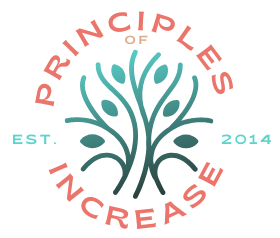
10 Tips for Going to College Debt-Free

When I first made this post, it was around 2016, and I had two young children I hoped would go to college debt-free. Though I thought the primary method would be for them to obtain scholarships, we ended up going a somewhat different route.
Starting around 2006, I started managing my kids’ careers in acting and voiceover. And boy, did it go well! As a result, my children were able to put a substantial amount of money away for college. My oldest is now in school, getting a university degree in Puerto Rico for less than the cost of community college in the U.S.
We are still working on getting scholarships for the girls, but in the meantime, we’ve been able to cover tuition with no debt! As a result, I’m expanding the scope of this article to talk about 10 ways to go to college debt-free.
Check out this resource: Amazon’s Top Books on Debt-Free College
1) Get full-tuition scholarships
To find and apply for full-tuition scholarships, students should start by researching various scholarship databases and websites like Fastweb, Cappex, and the College Board. It’s essential to look for scholarships offered by colleges, private organizations, and community foundations, as these opportunities can vary widely.
Students should prepare a strong application package, including transcripts, recommendation letters, and personal statements that showcase their achievements and aspirations. Additionally, staying organized and adhering to deadlines is vital to increase the chances of receiving these coveted awards.
2) Get multiple, smaller scholarships
This approach may seem time-consuming, but it doesn’t have to be. There are an astounding amount of scholarships that students can apply for on an individual basis. Some may be for $500 or $1,000 or even more, but it can add up. This approach may seem time-consuming, but it doesn’t have to be. You should be able to craft a few essays and use them over and over again to win scholarships, big and small.
Also, don’t overlook local scholarships offered by community organizations, businesses, and even local chapters of national foundations. These scholarships often have fewer applicants, increasing the likelihood of winning.
Students can check with their high school guidance counselors, local chambers of commerce, and community nonprofit organizations to discover available opportunities. By tapping into these local resources, students may find scholarships specifically tailored to their community involvement, heritage, or extracurricular activities.
3) Attend a low-cost community college or university
Your kids don’t have to attend an Ivy League school to get a good education. In fact, it’s not uncomment for students to attend community college for the first few years of their education and then transfer to a university,
In our case, we were able to send the oldest child to a low-cost university. Her degree will still be recognized in the U.S. should she decide to get an advanced degree in the U.S. Her goal is to become a nurse.
This can sometimes even work for health majors like medicine. For example, you could go to a low-cost medical school in the Dominican Republic or the U.S. Virgin Islands and then practice medicine in the U.S. by passing US Medical Licensing Exams. From here, you must get certified by the Educational Commission for Foreign-Trained Medical Graduates, enroll in a residency program, and then take a third licensing test.
Check out this resource: Amazon’s Top Books on Debt-Free College
4) Work at a college or university
Working at a higher education institution can be a strategic way to receive free or reduced tuition. Many colleges and universities offer tuition remission or discounts to their employees, which can significantly reduce your educational expenses. For example, if a student is employed in a part-time position on campus, they may be eligible for tuition benefits that cover a substantial portion of their fees.
It’s also common for students to become Resident Advisors in a dorm to watch over other students on the floor. RAs are typically responsible for supporting fellow students in residence halls, fostering a healthy living environment, and organizing community-building activities. In exchange for their services, RAs often receive free room and board, saving thousands of dollars annually.
5) Work at a job with tuition reimbursement or assistance
There are plenty of jobs and careers that can help you pay for your education. I remember working in the Chicago School District being presented with the chance to get a master’s degree in teaching at no cost. I only had to work in the school district for five years to get the full benefit. Ultimately, I passed on the opportunity, but I’ll always remember it as something that was a great deal.
6) Utilize 529 or Coverdell ESA College Savings Plans
College Savings Plans are tax-advantaged investment accounts specifically designed for education expenses. By starting these plans early, parents can contribute funds that will either grow tax-free or can be withdrawn tax-free, ultimately providing a significant nest egg for their children’s college education.
Many people prefer 529 because they are a tad more flexible. Many states offer various investment options, and the contributions can often be deducted from state income taxes.
Furthermore, funds can be withdrawn tax-free when used for qualified educational expenses, adding another layer of savings. By planning ahead and contributing regularly to a 529 plan, families can set their children up for a debt-free college experience.
Check out this resource: Amazon’s Top Books on Debt-Free College
7) Consider online or hybrid courses
Online or hybrid courses can provide a more affordable solution to achieving a degree. Many universities offer online programs that lower tuition rates compared to traditional on-campus courses. These programs also allow for greater flexibility in managing work and study schedules, benefitting students who must balance jobs or family obligations. Additionally, online learning can save money on commuting and housing costs, further assisting students in avoiding potential debt.
8) Take Advanced Placement (AP) or International Baccalaureate (IB) courses
High school students should take advantage of Advanced Placement (AP) or International Baccalaureate (IB) courses when available. These college-level classes usually allow students to earn college credits before stepping on campus.
By succeeding in these courses and passing the corresponding exams, students can potentially skip introductory college classes, reducing both time and tuition costs. This proactive approach prepares students for college-level work and shortens the duration and expense of their college education.
9) Participate in work-study programs
Many colleges and universities offer work-study programs, financially aiding students through part-time jobs. These programs are usually based on financial need, and the positions can be related to the student’s field of study, providing hands-on experience while earning money to assist with tuition fees. Work-study opportunities allow students to gain valuable skills while helping to offset educational costs, making it an excellent option for those looking to manage their college expenses effectively.
10) Apply for financial aid and grants
Finally, it’s crucial for families to apply for financial aid and grants. Filling out the Free Application for Federal Student Aid (FAFSA) is an essential step in determining eligibility for federal aid, including grants that do not require repayment. Many states and colleges also offer their own forms of financial aid that can supplement federal resources.
Additionally, numerous private grants are available through various organizations that can contribute to a student’s educational expenses. By fully exploring these options, families can significantly lessen the financial burden of college.
If you’d like more information on debt-free college, check out Amazon’s Top Books on Debt-Free College.



